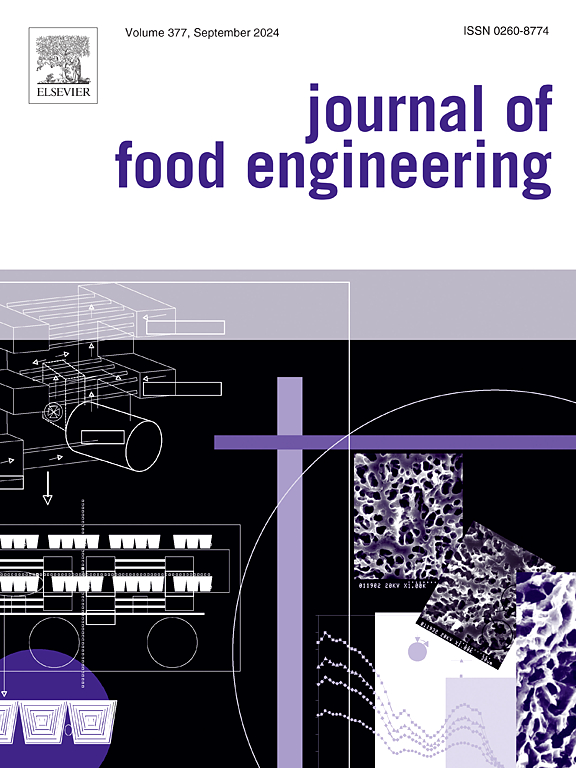Uncertainty-aware constrained optimization for air convective drying of thin apple slices using machine-learning-based response surface methodology
IF 5.3
2区 农林科学
Q1 ENGINEERING, CHEMICAL
引用次数: 0
Abstract
Air convective drying is an important food processing technology contributing to moisture reduction and food product preservation. Optimization of air convective drying is crucial to achieve high food quality and process efficiency. However, existing drying optimization methods have two critical limitations. First, conventional response surface methodology cannot adequately account for the intricate relationships between process variables and responses, and fails in optimization of multiple drying objectives including drying quality, drying time, and energy consumption. Second, process uncertainties are ubiquitous in industrial food drying, but existing modeling approaches often neglect these uncertainties. To address these limitations, this paper develops an uncertainty-aware constrained optimization framework for air convective drying of thin apple slices. Specifically, we employ machine learning techniques to establish variable-response relationships. The Monte Carlo simulation-based approach is utilized for uncertainty quantification. A constrained optimization method is then used to identify feasible design spaces and find the optimal process parameters. To validate our framework, we conduct drying experiments simulating real-world settings featured by thin apple slices and process uncertainties (e.g., sample thickness). Further, multiple key quality characteristics including color, texture, and water activity are measured and considered within the proposed framework. The developed response surface model demonstrates excellent prediction accuracy with an average mean absolute percentage error of 5.2%. The constrained optimization method leads to 17.9% energy savings and 19.4% reduction in drying time.
基于机器学习响应面方法的苹果薄片空气对流干燥不确定性感知约束优化
空气对流干燥是一项重要的食品加工技术,有助于降低水分和食品保鲜。空气对流干燥的优化是提高食品质量和加工效率的关键。然而,现有的干燥优化方法存在两个关键的局限性。首先,传统的响应面方法不能充分考虑过程变量与响应之间的复杂关系,不能对干燥质量、干燥时间和能耗等多个干燥目标进行优化。其次,过程不确定性在工业食品干燥中普遍存在,但现有的建模方法往往忽略了这些不确定性。为了解决这些限制,本文开发了一个不确定性感知约束优化框架,用于薄苹果片的空气对流干燥。具体来说,我们使用机器学习技术来建立变量-响应关系。采用蒙特卡罗模拟方法对不确定度进行量化。然后采用约束优化方法确定可行的设计空间并求出最优工艺参数。为了验证我们的框架,我们进行了干燥实验,模拟现实世界中薄苹果片和工艺不确定性(如样品厚度)的设置。此外,在提议的框架内测量和考虑了多种关键质量特征,包括颜色、纹理和水活性。建立的响应面模型具有较好的预测精度,平均绝对百分比误差为5.2%。约束优化方法节能17.9%,干燥时间缩短19.4%。
本文章由计算机程序翻译,如有差异,请以英文原文为准。
求助全文
约1分钟内获得全文
求助全文
来源期刊

Journal of Food Engineering
工程技术-工程:化工
CiteScore
11.80
自引率
5.50%
发文量
275
审稿时长
24 days
期刊介绍:
The journal publishes original research and review papers on any subject at the interface between food and engineering, particularly those of relevance to industry, including:
Engineering properties of foods, food physics and physical chemistry; processing, measurement, control, packaging, storage and distribution; engineering aspects of the design and production of novel foods and of food service and catering; design and operation of food processes, plant and equipment; economics of food engineering, including the economics of alternative processes.
Accounts of food engineering achievements are of particular value.
 求助内容:
求助内容: 应助结果提醒方式:
应助结果提醒方式:


